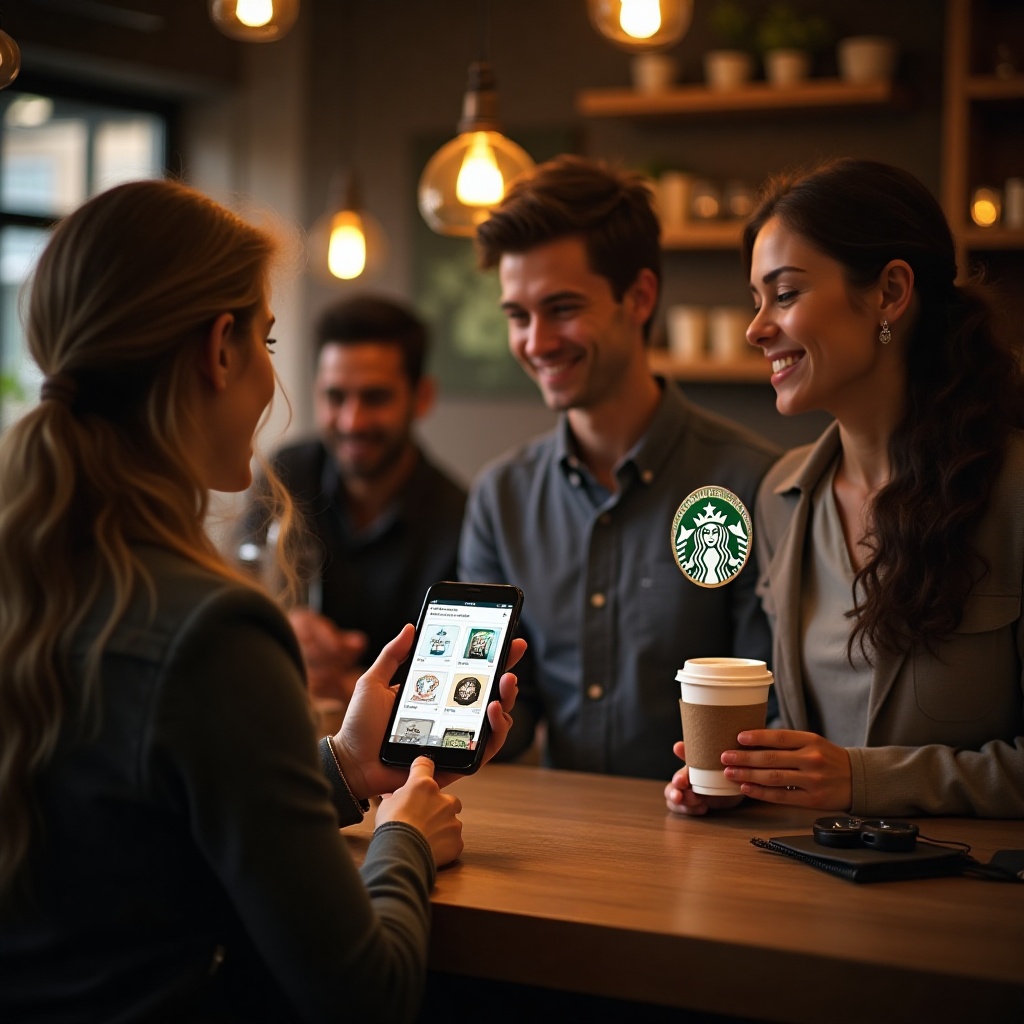NFT Loyalty Emerges on the Mainstage
When Starbucks launched its Odyssey program in late 2022, it did more than dip a toe into Web3—it cannonballed straight in. For a company known for its powerful brand and customer engagement, experimenting with blockchain technology wasn’t a gimmick. It was a calculated step forward to redefine loyalty in a digital, interconnected world.
Starbucks Odyssey was marketed as an extension of the existing Starbucks Rewards program, but with a twist: digital “stamps” powered by NFTs. These weren’t just flashy images. They represented ownership, access, and progression within a newly designed ecosystem meant to feel both exclusive and familiar. The vision was bold—transform passive rewards into interactive experiences, give customers a sense of belonging, and explore new frontiers in engagement.
But behind the innovation was an underlying tension: Could such a program scale to millions of Starbucks customers, many of whom had never heard of a blockchain, much less owned an NFT? And could it do so without alienating or confusing the very audience it hoped to empower?
This article examines that challenge in depth.
The Starbucks Odyssey experiment is worth understanding not just because of what it aimed to accomplish, but because of what it reveals about the current and future state of NFT loyalty programs. It presents a live case of a major brand trying to merge Web3 mechanics with mainstream usability—a test of whether cutting-edge tech can be made invisible to the end user while still delivering all its benefits.
We’ll unpack Odyssey’s structure, user experience, and ultimate trajectory. We’ll look at the tech that powered it—like the choice of Polygon for its blockchain and how Starbucks carefully masked Web3 jargon from users. We’ll dive into the journeys, the points, and the perks. And finally, we’ll confront the larger question: Can NFT loyalty programs scale without leaving behind those who aren’t crypto-native?
Because here’s the truth: It’s not enough for these programs to work. They have to work for everyone.
NFT-Based Loyalty vs. Traditional Loyalty Programs
To understand the true ambition behind Starbucks Odyssey, we first need to recognize the fundamental differences between traditional loyalty programs and those powered by NFTs.
Let’s begin with the familiar.
Traditional loyalty programs—like the standard Starbucks Rewards system—are built around a closed-loop points economy. You buy a drink, scan your app, earn “stars,” and later redeem those stars for a free beverage or snack. It’s direct, transactional, and, most importantly, easy. The value proposition is clear: spend money, earn rewards, repeat.
Now enter NFTs. Non-Fungible Tokens bring a very different set of possibilities—and complexities—to the table. When Starbucks introduced NFTs into the mix, it wasn’t simply trying to reward customers with digital collectibles for fun. It was introducing a concept of ownership and access that traditional loyalty points can’t replicate.
This changes the emotional dynamic. Loyalty becomes more than participation—it becomes ownership. Customers don’t just earn rewards; they collect assets.
NFTs enable tradable, verifiable digital assets that carry programmed utility: perks, access, and sometimes resale value. Unlike loyalty points, which are locked into one ecosystem and typically expire, NFT-based rewards are persistent, unique, and often portable. They can be held in a wallet, traded on a marketplace, and used as proof of engagement.
In Odyssey, this manifested as “Journey Stamps.” These stamps, tied to brand-related tasks and learning experiences, held point values and offered a new kind of reward: a fusion of education, exclusivity, and ownership. Completing tasks earned you points; those points unlocked higher tiers of rewards.
But the model introduced complexity. Instead of a direct “spend and earn” relationship, users had to engage in quizzes, videos, store visits, or even digital missions. They had to manage a layered system of stamps, points, and journeys. This was immersive for engaged users but potentially overwhelming for casual ones.
That’s the paradox of NFT loyalty programs: they offer more—but only to those willing to do more.
The opportunity is vast, but the trade-offs are real. The question is no longer whether NFT loyalty is technically possible—it’s whether it can be made desirable and understandable to the average user.
The Starbucks Odyssey Experiment
Starbucks didn’t enter Web3 lightly. With Odyssey, they crafted one of the most comprehensive NFT loyalty pilots of any global consumer brand. It wasn’t just a tech demo—it was an attempt to evolve loyalty from linear transactions into immersive digital storytelling.
Odyssey introduced “Journeys”—mini-experiences users could complete to earn “stamps” (NFTs). These were structured to educate, entertain, and drive both digital and in-store engagement. A Journey might involve learning about Starbucks’ coffee sourcing, visiting a store to try a featured drink, or completing a brand-related quiz.
Each stamp earned carried a set point value. Collecting points unlocked access to reward tiers, which ranged from virtual classes and exclusive merchandise to once-in-a-lifetime trips like a guided tour of Starbucks’ Hacienda Alsacia coffee farm.
Technically, Odyssey was powered by Polygon, a scalable and energy-efficient blockchain solution. But Starbucks carefully hid all traces of Web3 from the user experience. No wallets, no gas fees, no crypto. Users simply logged in with their Rewards credentials and navigated a familiar interface.
The NFTs—called “stamps”—were issued and stored in custodial wallets. Users didn’t need to understand smart contracts or token standards. They just saw digital stamps in their app. If they wanted to buy or sell a stamp, they used a branded marketplace with fiat payment options.
And yet, under the hood, it was all blockchain.
This approach made Odyssey a “Web2.5” experience: blockchain-powered, but user-friendly. It allowed Starbucks to leverage the benefits of decentralization without burdening customers with its complexity.
But Odyssey also had its limitations. The layered design—tasks, stamps, points, tiers—was richer than a standard loyalty app, but also harder to grasp. While early adopters and crypto-curious users appreciated the novelty, some traditional customers found it convoluted.
In early 2024, Starbucks ended the Odyssey beta. Officially, it was to “evaluate the next phase.” Unofficially, it reflected a recognition that wide-scale adoption would require even more simplification and clarity.
Still, Odyssey proved a point: NFT loyalty can work at scale—but not without friction, and not without compromise.
Bridging Crypto-Native and Mainstream Audiences
One of Odyssey’s greatest accomplishments was how it served two very different audiences—without alienating either.
For crypto-native users, Odyssey offered real NFTs, market dynamics, and ownership. You could buy rare stamps, track limited editions, and even flip them on the secondary market.
For mainstream users, it was a gamified extension of an existing app—no wallet, no crypto knowledge, no technical onboarding.
The secret was abstraction.
Odyssey completely hid blockchain infrastructure from view. It used familiar language—“stamps” instead of NFTs, “journeys” instead of missions—and provided real-world value without requiring new behaviors. You didn’t need to hold a wallet or download an extension. You just used the Starbucks app.
At the same time, for users who wanted to explore Web3 features, Odyssey allowed it. You could track stamp scarcity, monitor marketplace activity, or export assets if needed. It was Web3 for everyone—accessible to the curious, invisible to the cautious.
But even with this careful balance, the program had rough edges. The reward system was still too complex for some. Users had to manage dual point systems, remember which stamps unlocked what, and track Journey completion timelines. These may seem minor, but in loyalty programs, simplicity is king.
What Odyssey ultimately revealed is that NFTs don’t have to feel like NFTs to work. But programs must still guide users clearly, reduce mental effort, and provide immediate perceived value.
Comparative Insights: Odyssey vs. Other Web3 Loyalty Efforts
Starbucks wasn’t alone in exploring NFT loyalty.
Other brands, like Wow Bao, took a different route. Instead of gamifying tasks, Wow Bao introduced NFT-based memberships called CollectaBaos. These offered real perks—free food, double points—without ever mentioning blockchain. Users bought the pass with fiat and got access to exclusive deals.
Platforms like Unlock Protocol and Stakes offer tools for restaurants and small businesses to tokenize memberships and event access. Their goal is frictionless onboarding: no wallet required, no technical setup, just email-based NFT delivery and seamless QR code integration.
Meanwhile, companies like Nike and Taco Bell have dabbled in NFT collectibles. These drops generate buzz, but rarely build long-term engagement. Nike’s digital sneakers and Taco Bell’s NFT-backed gift cards grabbed headlines but didn’t evolve into loyalty ecosystems.
What set Odyssey apart was its ecosystem design. It wasn’t a one-time drop. It was a layered loyalty framework with ongoing tasks, tradable rewards, and community progression. It invited long-term participation and blended digital assets with real-world value.
But that complexity is also what limited its scalability. Simpler models like Wow Bao’s may lack depth but are easier to adopt. The industry is still exploring that balance: depth versus simplicity, ownership versus usability.

Challenges to Scale and Inclusion
As promising as Odyssey was, it revealed major challenges to scaling NFT loyalty across a mainstream audience:
- User education remains a bottleneck. Even when blockchain is hidden, if users don’t understand why they’re earning digital assets, they may disengage.
- Complexity erodes retention. Tasks, tiers, and marketplace mechanics may appeal to superfans but overwhelm casual users.
- Value clarity is essential. If rewards aren’t clearly better than those offered through traditional loyalty, users won’t switch.
- Mobile UX and performance must be flawless. Any app glitches, failed stamp redemptions, or login issues break trust fast.
- Public skepticism toward NFTs still lingers. Many consumers associate them with scams or speculative hype. Rebranding is necessary.
- Regulatory uncertainty hangs over the space. NFT-based rewards may eventually face stricter classification as financial assets.
To overcome these challenges, NFT loyalty programs must be ruthlessly focused on removing friction, building trust, and over-delivering on value.
Strategic Recommendations for Future NFT Loyalty Programs
Based on everything Odyssey taught us, here’s what brands need to do if they want to build successful, inclusive NFT loyalty systems:
- Abstract the crypto layer. No wallets, no tokens, no jargon. Use email logins, custodial wallets, and fiat payments.
- Integrate with existing systems. Build into your current loyalty app, not alongside it.
- Offer immediate, tangible value. Make it obvious why a digital stamp is worth earning. Tie it to perks people understand.
- Keep the interface dead simple. One task, one reward. No need to decipher how it all works. Just make it work.
- Give power users deeper features. Let crypto-savvy users trade, export, and collect. But make that optional.
- Foster community. Add leaderboards, voting, or shared milestones. Loyalty is social.
- Enable portability. Let users use NFTs across platforms, brands, or services.
- Track qualitative metrics. Don’t just measure redemptions—track engagement, sentiment, and community activity.
- Communicate a roadmap. Let users know what’s coming. Loyalty is built on expectation.
- Stay agile. Launch as a pilot, adapt fast, and always be ready to simplify.
The opportunity is vast. But loyalty is fragile. Programs must serve the user’s experience first, and the technology second.
Bridging Worlds in Loyalty
Starbucks Odyssey wasn’t just a loyalty experiment—it was a test of trust. Could users trust a new system? Could they understand it? Could they enjoy it?
In many ways, the answer was yes. Odyssey worked. People engaged. Digital stamps were earned and traded. Real-world perks were unlocked. A community was formed.
But in the ways that matter most—scale, simplicity, and universal adoption—the answer was not yet.
NFT loyalty has a future. But only if it becomes invisible, accessible, and emotionally rewarding. Not because it’s built on blockchain. But because it brings people closer to the brands they love.
That’s what loyalty has always been about. And it still is.




